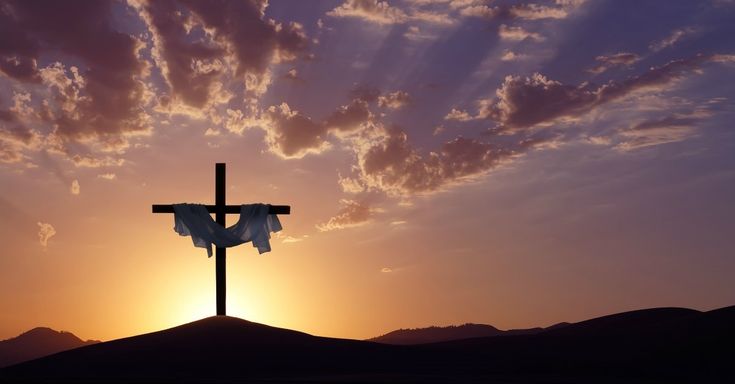Living The New Life Of The Resurrection In Our Time
 July 8, 2019
July 8, 2019
The event of the resurrection is about a young man in his prime, birthed by a virgin in a dramatic mystery. By human reckoning he is of a humble background, the son of a carpenter. But there is more than meets the eye. He is both divine and human, the second person of the Holy Trinity. He came for a purpose, which is to redeem humanity from the claws of sin and death. This vision can only be realized by dying. He had foretold his eminent death at different times. But that is definitely not the end of the story as in former times. It is the dawn of a new beginning. By the power of the Spirit he breaks loose the power of death, he dispels the darkness that overshadows the human mind, he destroys the shackles of slavery, and overthrows the prince of darkness, nay ‘he arose like a victor from the dark domain’ (Easter Hymn). St. John Chrysostom rejoices in his Easter homily, ‘…Christ is risen, and the demons are fallen, Christ is risen, and the angels rejoice. Christ is risen, and life reigns…’
He humbly submitted himself to the whims and caprices of all that he came to save us from. He descended into hell so as to break the chains of death. He was inflicted with injustice so as to satisfy the divine justice. He suffered man’s inhumanity to man so as to restore true love and affection. He was a victim of public condemnation so as to justify humanity. He was acrimoniously oppressed so as to restore humanity to true freedom. Hence he allowed himself to be held captive because he wants to release the captives as foretold by the Prophet Isaiah (Isaiah 61:1-2; Luke 4:18-19). He allowed himself to be maltreated because he wanted to deliver us from the dominion of darkness and to heal the human heart. He needed to experience death so as to destroy the stronghold of death and give eternal life to humanity – ‘truly, truly I say to you, unless a grain of wheat falls into the earth and dies, it remains alone, but if it dies, it bears much fruit’ (John 12:24). Very elucidating are the words of Archbishop Fulton Sheen: ‘The cross had asked the questions; the Resurrection had answered them… The Cross had asked: ‘Why does God permit evil and sin to nail Justice to a tree?’ The Resurrection answered: ‘That sin, having done its worst, might exhaust itself and this be overcome by Love that is stronger than either sin or death’ (Lent and Easter Wisdom, 110).
The literal meaning of resurrection is ‘standing up again of the dead’ derived from the Greek ‘anastasis [ton] nekron’. So to resurrect simply connotes the coming back to life from death, in the sense that the body and the soul are completely reunited. The previous separation of the human being becomes a thing of the past. This is not to be mistaken for the spirit of the dead separated from the body as often echoed by African movies wherein the spirit of the dead emerges from the tomb to witch-hunt or to avenge the enemies. Consequently, this is not true of Jesus because no remains were found in the tomb. He rose completely in body and soul. However, upon the events of the resurrection, his body is now clothed with glory. In other words, he rose with a glorified body.
The belief in the resurrection dates back to the Old Testament era. Some other religions also uphold the doctrine of the resurrection, of particular mention is Hinduism. In the Old Testament, there were instances that foreshadow the resurrection. Prophet Elisha raised the child of the Shunammite woman from the dead. This is an instance of bringing back to life. There are other prophetic sayings that point to the resurrection. Job prophesied from the ash heap of his affliction; ‘for I know that my Redeemer lives, and he, at last, will take his stand on earth. I will be there behind my skin, and in my flesh I shall see God’ (Job 19:25-26). Isaiah did not mince words about the resurrection. He says, ‘he will swallow up death forever, and the Lord God will wipe away tears from all faces, and the reproach of his people he will take away from all the earth; for the Lord has spoken’ (Isaiah 25:8). Prophet Daniel is by no means an exception as he has something to say about the resurrection, ‘and many of those who sleep in the dust of the earth shall awake, some to everlasting life, and some to shame and everlasting contempt’ (Dan. 12:2).
Furthermore, among the Jews, belief in resurrection was not farfetched. This was championed by the Pharisees. The Martha’s confession at the death of Lazarus is a veritable proof to this assertion. She says, ‘I know that he will rise in the resurrection, at the last day’ (John 11:24). Most importantly, Jesus did not hesitate to show that he is the master of death by dint of his resurrection; he is, a fortiori, the giver of life. He raised Lazarus who had been buried for days from the dead. He also raised to life the child of the official (Luke 8:54-55). It is crystal- clear therefore to state that the power to bring to life again is inherent in Jesus.
Essentially, it must be noted that the resurrection of Jesus cannot be regarded as a false event or a mere figment of the imagination. It actually took place in history. It is not a makeup story as some believe. There are some factors that give credence to the event of the resurrection: the displacement of the guards, the dislodgment of the stone from the entrance of the tomb (cf. Mark 16:3ff), the empty tomb, the linen clothes, the appearance of the angels to Mary Magdalene and her encounter with the Lord outside the tomb, and the obvious absence of the corpse of Jesus from the tomb. Exegetically there was no proven eyewitness to the resurrection. Not even the soldiers on guard could withstand the scenario. They were all dazed completely. The sight of it must be horrible and heart-rending (cf. John 28:1-4). It brings to mind the mind-seizure encounter of the people of Israel at the foot of Mount Sinai (cf. Exodus 19:16-19).
The resurrection of Jesus has paved the way for a new life. The old life has been terminated. Death and all its humiliating elements have been rendered powerless. The resurrection gives us a new life in the spirit; a life of grace, a life that looks towards salvation, in short, a heavenly living. ‘Faith in the Resurrection of Jesus says that there is a future for every human being; the cry for unending life which is a part of the person is indeed answered’ says Pope Benedict XVI (Benedictus, 128). By the event of the resurrection, life has assumed a spiritual transformation. The new life in Christ should be perceived as eschatological, that is, this earthly life is not the end of it all. It is rather a new beginning. In the words of Saint Peter: ‘Blessed be the God and Father of our Lord Jesus Christ! By his great mercy we have been born anew to a living hope through the resurrection of Jesus Christ from the dead, and to an inheritance which is imperishable, undefiled, and unfading, kept in heaven for you,’ (Pet. 1:3-4).
From the foregoing, the death and resurrection of Jesus is a lesson for those who live as if there is no consequence, with a sense of recklessness. It is an alarming caution for those who have become so materialistic, those who aggressively amass wealth for themselves as if this earth is a never-end paradise. Contentment is a gift that comes from the resurrection. In other words, the hope of a new life with Christ in heaven is the basis for contentment (Col. 3:10).
More than ever before, the resurrection of the Lord serves as a clarion call to this contemporaneous generation wherein life is misconstrued and misused. The resurrection re-echoes the dignity of human life. No life is less important. Jesus died for every soul. The culture of death is thus condemnable and inimical to the ideals of the resurrection. Our leaders of today especially those in government should borrow a leaf from the Risen Lord who gave all he has and accepted the most excruciating torments so as to restore the life of humanity. It is so disheartening to see how life is being wasted and misused in our world of today. The incessant miming, the reckless killings, as often perpetuated by religious bandits and political thugs are regrettable instances of waste. On the other hand, the reckless way of living, the self-sale of human parts, pitiable loss of life to cultism, drug abuse, self mutilation, suicide, staking of one’s life for money ritual and the like, is nothing else than a misuse of life.
We do all these, ignorant of the fact that Christ has paid the price for our souls. We can have peace and live happily if and only if we give premium to our lives as God does. With the new life of Easter, we have become “alleluia people,” people of praise and thanksgiving. Christ has won for us a life of freedom, joy and peace. This does not mean that the resurrection of the Lord is an assurance of a painless life. Rather, the assurance of salvation is the reason for our joy. Such joy is spiritual, a joy whose source is derived from the ethereal. However, the human person will never cease to be complex and unyielding. Death has been conquered, but some still prefer death to life. Darkness has been dispelled, but some still prefer darkness to light. Hatred has been abolished, but some have sworn an oath never to love. Evil has been paralyzed, but some still prefer to be agents of evil. Falsehood has been put to shame, but some still have aversion for truth (the rate at which lies are employed and used as tool today is highly condemnable). The old Adam has been replaced by a New Adam, but many still want to follow the footsteps of the former. That is why we are encouraged to go for what is noble and profitable. St. John says, for instance, “….Walk while you have the light, lest the darkness overtake you; he who walks in the darkness does not know where he goes. While you have the light, believe in the light, that you may become sons of light’ (John 12:35-36).
To this end, the resurrection culminates in the call to witness. The new life has to spread across the earth. Everyone who has a taste of it has the onus to make it known to others. This exactly was the injunction given by Jesus to his disciples at Galilee. By so doing, we have to uphold all that make for life and at the same time jettison death and its attendant consequences. We are called upon to promote life.
May the Risen Lord fill us with his love! And may we reap the fruits of the resurrection. Wishing all our readers a very Happy Easter!
By Rev. Fr. Mark Ajiga
 Guy Wilkins
Guy Wilkins Larry Reed
Larry Reed Roxanne Holland
Roxanne Holland Bridget Kennedy
Bridget Kennedy Sally Mendoza
Sally Mendoza